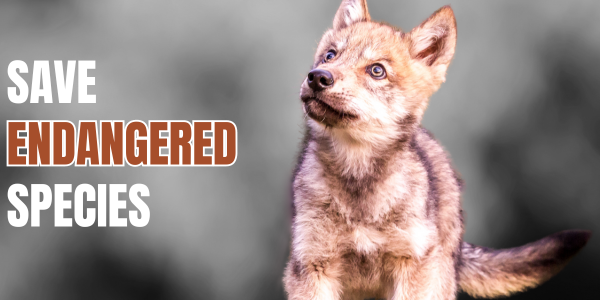WildEarth Guardians’ efforts to defend Mexican wolves
Restoring Lobos
The Mexican gray wolf, or lobo, is the most endangered gray wolf in North America and one of the most endangered carnivores in the world. After lobos were nearly wiped out, reintroduction began in 1998 in remote areas of New Mexico and Arizona. Since then, recovery has been slow and turbulent.
In 2015, the U.S. Fish and Wildlife Service decided that the only wild population of Mexican gray wolves in the U.S. was not essential to the recovery of Mexican gray wolves as a species. Guardians and our allies sued, and in 2018, a U.S. district judge told the Service to go back to the drawing board to write a new management rule for the lobo.
Now, we’re all at the drawing board—and we need your voice to help ensure that Mexican wolf management aims at true recovery.
To truly recover lobos, a new rule should be based on the best available science and prioritize enhancing the genetic diversity of the wild lobo population, allowing lobos to live throughout their historic range, and ensure that wolves are protected from poaching and only removed from the wild in cases of imminent threat to human health or safety.
U.S. Fish and Wildlife Service’s “decision to maintain the population’s nonessential status without consideration of the best available information was arbitrary and capricious.”
— Honorable Jennifer G. Zipps, United States District Judge
Greatest Threat
Humans are the largest obstacle to truly recovering lobos.
Along with illegal trapping and hunting, vehicular mortalities, and official removals from the wild, politically motivated “recovery” plans have put the lobo in a precarious position.
Genetic Diversity
Mexican wolves in the wild are, on average, as related as brothers and sisters.
Though lobos are increasing in number, perhaps the greatest indicator of recovery efforts is the genetic health of the wild population. Unfortunately, a genetic bottleneck threatens lobos: those in the wild are, on average, as genetically related as brothers and sisters.
Protection & Recovery
Find out more about Mexican wolf reintroduction and our efforts to protect and restore the lobo.
The Greater Gila Bioregion
Learn about our work in the Greater Gila Bioregion, home of the Mexican wolf.
A Better Approach to Wolf Recovery
Read the letter conservationists, leading scientists, and animal activists sent the U.S. Department of Interior and U.S. Fish and Wildlife Service about the new Mexican wolf management rule.
